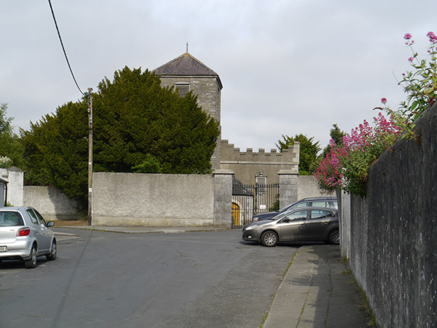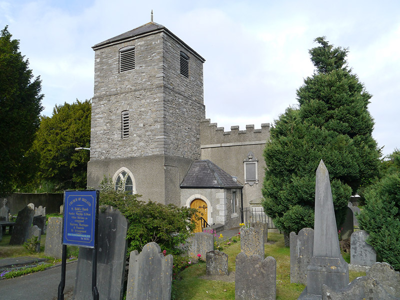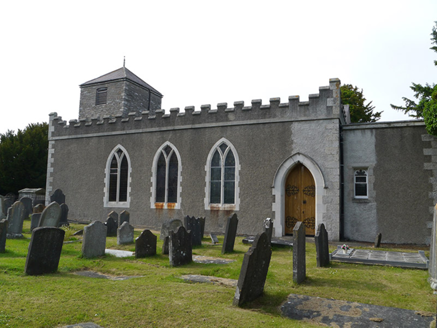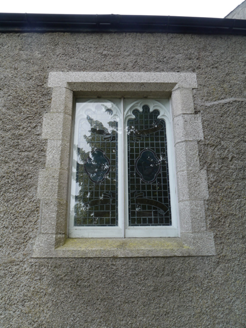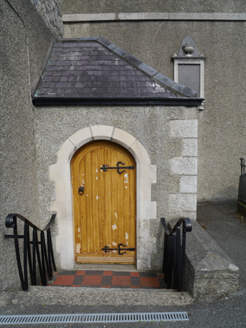Survey Data
Reg No
50130045
Rating
Regional
Categories of Special Interest
Archaeological, Architectural, Artistic, Social
Original Use
Church/chapel
In Use As
Church/chapel
Date
1640 - 1900
Coordinates
315332, 237652
Date Recorded
05/06/2018
Date Updated
--/--/--
Description
Freestanding Church of Ireland church, representing rebuild of 1707 of earlier structure, having five-bay nave abutted by single aisle to south, east chancel built 1897, three-stage west tower of likely pre-1707 date and lower vestry to north; main porch built c. 1898 and set in angle of tower and nave, secondary entrances to north and south elevations. Pitched slate roofs with slate ridge tiles and cast-iron rainwater goods; monopitched copper-clad roof to south aisle having concealed gutters behind crenellated parapet. Shallow pyramidal slate roof to tower with finial. Roughcast rendered walling with granite quoins and limestone copings; exposed rubble limestone to upper stages of tower with dressed quoins stringcourse between stages. Primary pointed-arch window openings with chamfered limestone surrounds and Y-tracery containing leaded lights; secondary square-headed window openings with granite surrounds containing plaster cinquefoils with leaded lattice lights; timber louvres to upper stages of tower having limestone voussoirs. Round-headed doorway to west porch with chamfered limestone dressings; pointed-arch doorway to south aisle with limestone dressings and hood-moulding; stained timber battened doors with cast-iron strap hinges. Set within historic graveyard enclosed by roughcast rendered boundary walls with cast-iron double-leaf gate to west side set in ashlar limestone piers with granite coping.
Appraisal
St. Mobhi's is a modest Church of Ireland church sitting in an enclosed graveyard off Ballymun Road. Built in phases to provide a place of worship for incoming Protestant families, on the site of a early medieval church, the nave was constructed in 1707 onto a pre-existing tower, and the south aisle and chancel were added in the nineteenth century under the Ecclesiastical Commissioners. The building gives a distinct sense of historical development, with evidence of gradual accretions over the years, and is of social interest as a place of worship for the local Church of Ireland community and as a place of burial for both Catholics as well as Protestants. It is enhanced by the surrounding churchyard which is of considerable antiquity. The boundary features and gates contribute to a sense of tranquillity, redolent of the former rural village setting of this now densely developed area. The church is dedicated to St. Mobhi, the founder of a monastery in the sixth century, which formed the basis of the early settlement of Glasnevin.
